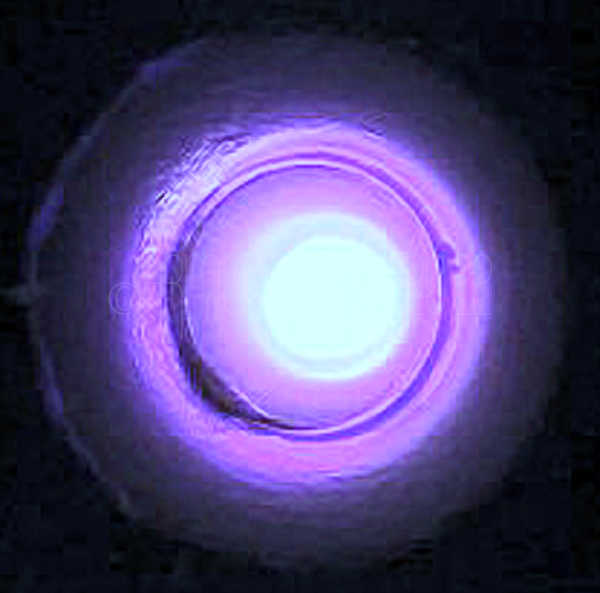This plasma tweeter has had one of the longer lifespans of a massless speaker as the production of it was taken over in 1998 by Lansche Audio who still sells it. Acapella (formerly ATR) also have a current model, the Ion-TW-1, which was also originally designed by Otto Braun. That is now sold as part of their high end loudspeaker systems. None of these appear to have obtained patents or licensed their designs, which would make sense from the amount of prior art.
Around the same time, in 1978, the Hill Type-1 Plasma Speaker System from Plasmatronics Inc. was demonstrated in the US, patented in 1979. This well known commercial product, often known just as the Plasmatronic, was a full range speaker system using a unique plasma tweeter based on a DC bias system instead of RF and with several plasmas rather than being horn loaded. Notorious for its use of helium tanks in the speaker cabinet, the helium was gently flowed into the plasma tweeter chamber preventing it from creating any noxious gases. It seems that little attention was paid to this major negative issue of high voltage massless speakers until now. Without some measures taken all types of plasma/ion/corona loudspeakers react with the air to create ozone and NOx. These toxic gases are harmful, especially in closed rooms where concentrations can build to harmful levels. By replacing the air locally with an inert gas no reaction can take place so no toxic gases are produced.

